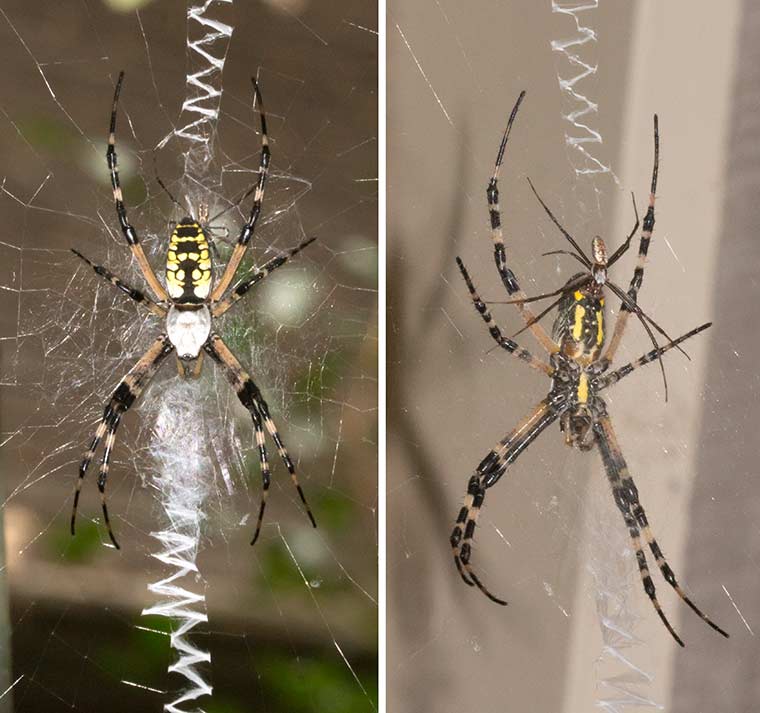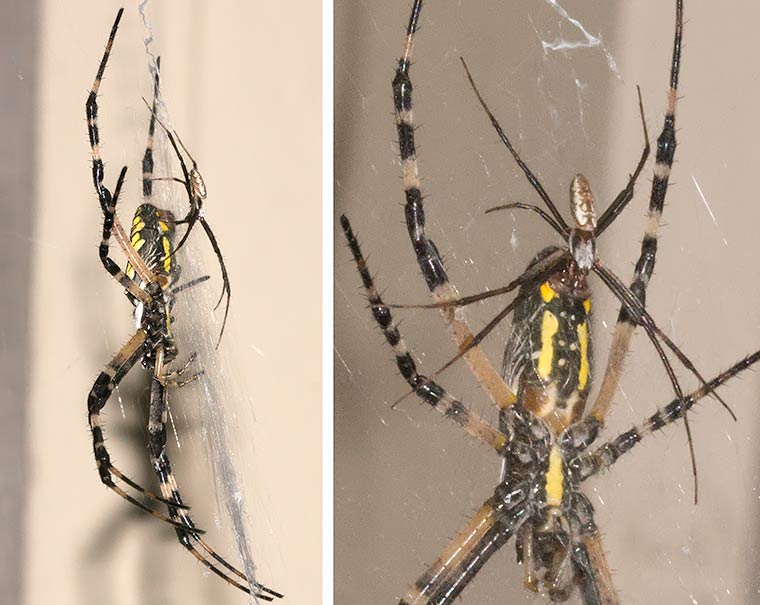This beautiful creature chose to build its web right outside our kitchen window. It is a type of Garden Spider (Argiope aurantia), and its bright colors and large size make it easy to spot. It has several common names, including Black and Yellow Garden Spider and Corn Spider (presumably because it is as large as a grain of corn, and it has a yellow color). If you look around outside your house, you may be lucky enough to spot one.
Argiope builds a large (3 feet or more in diameter) and conspicuous web. The extra thick, zig-zag silk platform in the middle of the web is called a stabilimentum, and it serves as a platform where the spider sits to wait for something to become entangled in its web. It may also have other functions, such as increasing visibility of the web so that birds do not crash into the web and damage it. Another common name, the Writing Spider, comes from the supposed resemblance of the stabilimentum to some sort of script.
I noticed that there were really two spiders present. The large and colorful one is the female. It made the web. The very small one behind the female is, in fact, the male of the species. They are so different that if they were seen separately, they might be presumed to be different species. It is common in orb-web weaving spiders for the male to be much smaller than the female. Its sole purpose is to find a female, to approach very carefully, and to attract favorable attention from the female by plucking the strands of her web in a certain manner. This is hazardous business. Females are not always receptive, and in some cases they will kill and eat the male.
Orbweaving spiders have quite poor eyesight and depend on vibrations in the web to guide them to potential prey. This species is quite harmless to humans, so just have a good look and leave them alone. If you watch carefully, you may notice that this species consumes the center part of its web every night and constructs a new one in the morning.


